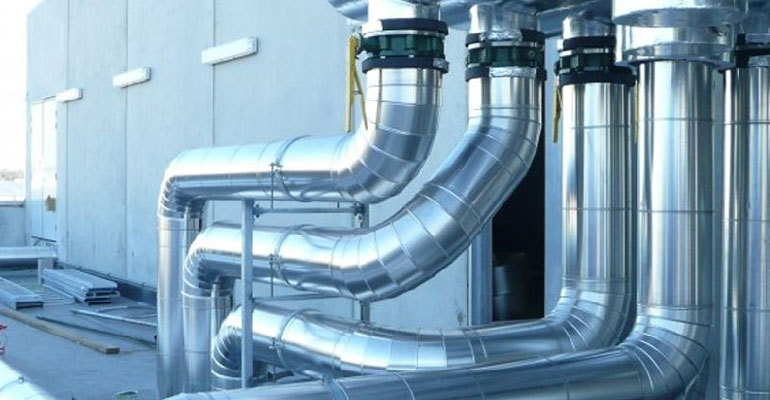
THERMAL INSULATION
Insulation refers to an energy savings measure, which provides resistance to heat flow. Naturally, heat flows from a warmer to a cooler space. By insulating a house, one can reduce the heat loss in buildings in cold weather or climate, and reduce the heat surplus in warmer weather or climate.
What is insulation method?
A reflective insulation system involves placing reflective materials such as foils, papers, or films in attics, ceilings, floors, or unfinished walls. Rather than reduce heat flow in a home, like most forms of insulation, reflective systems reflect heat away from a home.
What are the benefits of insulation?
Insulation acts as a barrier to heat flow. It can make your home more comfortable by reducing the amount of heat escaping in winter and reducing the amount of heat entering in summer. By insulating you can significantly reduce your heating and cooling bills and help to reduce greenhouse gas emissions.
What are the four types of insulation?
There are several different types of insulation, including the four most common listed below:
Loose-Fill & Blown-In Insulation.
Batt & Roll Insulation.
Reflective Insulation & Radiant Barriers.
Spray Foam & Foam-In-Place Insulation.
Hot Insulation Materials
Removable insulation is specifically designed to insulate piping systems transporting gas and substances at high temperatures. The materials used to construct the insulation work to prevent your pipes from overheating, while keeping the warmth inside the pipe. This helps to cut down on energy bills for your facility, saving you money in the long run.
So, what materials are used during circumstances that require hot insulation? Well, that depends on the intended purpose of the pipe being insulated. There is a laundry list of materials to choose from all with different purposes. Below are 3 common materials:
- Cray Flex: This material has a high thermal, heat and chemical resistance, while still produced from high quality raw materials.
- Resin Bonded Rockwool: Used in both cold and hot insulation, resin bonded rockwool has high thermal, chemical and heat resistance with an unmatched dimensional stability.
- Spiral-wrap Fiberglass: This type of fiberglass is difficult to install, but extremely inexpensive for your hot insulation needs. It both keeps the contents being transported at the proper temperature, while ensuring the excess heat remains within the piping system.
The most important part about picking a hot insulation material is understanding the maximum temperature the insulation will be covering. Components less than 350°F can be covered with off the shelf pre-molded fiberglass. When components are near or above temperatures of 1000°F, silica or ceramic insulation is usually required. It is very important to adhere to manufactures suggestions when picking and installing insulation for hot components.
Cold Insulation Materials
Just like hot insulation materials, some of the materials used to produce cold insulation vary dependent upon the system of pipes they are insulating. Therefore, the materials used in either hot or cold insulation are dependent on the customization of the particular piping system. Two common materials used in cold insulation are:
- Polyurethane Foam: Perfect for handling low thermal conductivity and substances with below freezing temperatures. Polyurethane foam also allows for low smoke emission and low water vapor permeability.
- Rubber Foam: Rubber foam is also often recommended for condensation control as the closed cell technology is highly resistant to moisture vapor.
With chilled insulation, keeping the cold in is as important as keeping the heat out. There are many types of insulation used on chilled water pipes. The two most popular are foam glass and rubber insulation or Armaflex. Although a little more difficult to work with than pre molded fiberglass, when installed correctly, these materials do a great job of stopping condensation and preventing energy loss.
What Is the Difference between hot and cold insulation?
The difference between hot and cold insulation materials comes down to a few things. Firstly, the materials used in hot insulation covers don't require a water vapor barrier that a cold insulation system needs to properly function. The water vapor barrier helps prevent metal degradation that can occur overtime.
Buildups of condensation occur within cold systems, which require bendable or flexible insulation to deal with this issue. Therefore, the types of metal, fiberglass, foam and other materials used for thermal bridging in cold insulation are much more flexible and moldable than those found in hot insulation materials.
Lastly, closed cell structure is needed in cold insulation to help avoid wicking. The material in high temperature insulations allows water to enter because the heat will cause the moisture to evaporate. However, in a cold insulation system, the water will not evaporate. Closed cell structure of the cold insulation material helps prevent this problem.
What is dual insulation?
During operation many times it happens that a piping system has to experience both hot and cold operating temperatures depending upon specific process requirements. In such situations the piping must have to be insulated using both hot and cold insulation i.e dual insulation. But this requirement must has to be listed in related P & ID , Line list and Insulation Specification. Supporting of dual insulated piping system is categorised in following two cases.
What is Acoustic Insulation?
Acoustic insulation is a type of soundproofing that attempts to prevent sound from entering or exiting an enclosed space by creating some a barrier between the interior and the exterior area. Because sound is able to travel in more than one fashion, the exact process and choice of materials used to manage sound insulation will vary. In some cases, the insulation does effectively reduce sound transmission, but does not completely eliminate the transmission of sounds.
One of the more common approaches to acoustic insulation is the creation of a barrier of some type between the origin of the sound and the surrounding area. The installation of panels on interior walls is one example. With this application, the panels contain foam or other materials that can help to absorb echoing, reverberations, or other types of sound transmissions.
Another option with acoustic insulation involves inserting sound-reducing materials within an existing wall. While this approach does not eliminate sound from penetrating the wall itself, it can usually absorb enough of the sound to minimize the amount that emerges on the opposite side of the wall. This approach is often used in apartment buildings and other areas where people live and work in close proximity.
What is acoustic insulation material?
Sound absorbing materials include open-cell elastomeric foams such as polyester and polyurethane. When sound is absorbed, part of the sound energy is converted to a very small amount of heat. Acoustic insulation that's made of open-cell foams absorbs this friction within the material's cellular structure.
What is the difference between thermal and acoustic insulation?
Thermal insulation restricts heat transfer, whereas acoustic insulation restricts sound transfer or sound reverberation. The combined product is thermal acoustic insulation, which is effective in both reducing heat and noise transfer.

